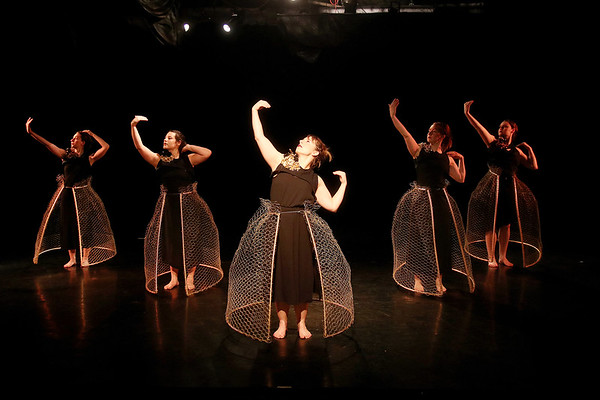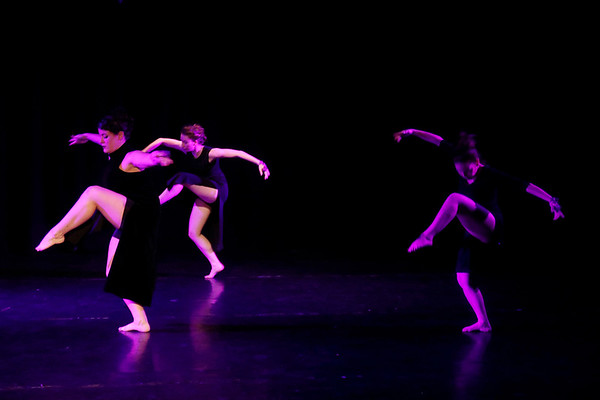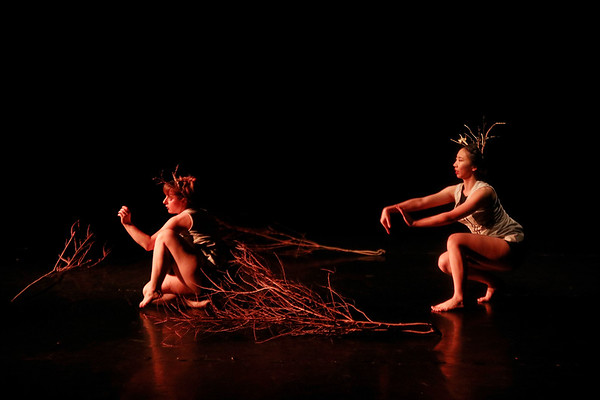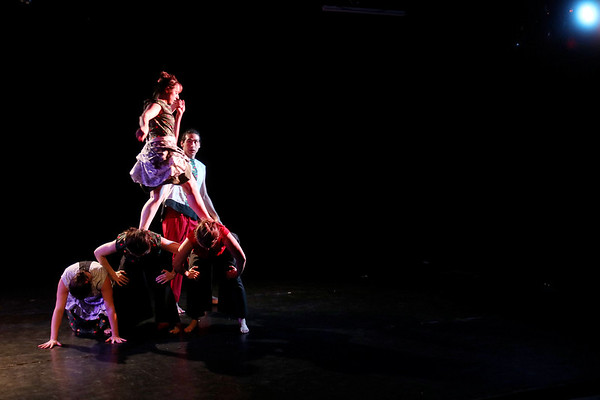Ashley Horn Challenges and Transports Audiences in Vesper

Photo by Pin Lim
We all seem to seek mindfulness, but when you get the opportunity to stop and reflect, do you? Social media scrolling is an epidemic. We tap our fingers on our screens and live one inch below the surface. Our minds and bodies cannot possibly maintain the pace we keep, but we crave busyness. Information acquisition masquerades as productivity. And productivity is a high. Somewhere between cell phones and smart phones we started having this insatiable need to know. Just think, if you’re having a conversation with someone and a question comes up, how fast do you pull out your phone to Google the answer? If we are constantly taking in information, we cannot possibly reflect on it. The traditional church service is one of those few places where we put down our phones, where we stop and think. We do so because there is a specific order of worship; we know what’s next. While not a church service, Ashley Horn’s Vesper at the Pilot on Navigation on March 18, 2017 reminded me that ritual is a key to mindfulness and reflection.
After thirteen years of providing the Houston community with narrative-driven dance theater, FrenetiCore Dance has been restructured into the Pilot Dance Project. Under the directorship of Adam Castañeda, this new format brings in independent choreographers to create new works on a group of dancers. Horn’s Vesper was the Pilot Dance Project’s inaugural presentation at the recently renamed Pilot on Navigation.
Vesper had two parts. Part 1: The audience waited in the lobby until Horn came out to give us directions to walk onto the stage and through the maze. When the curtain dropped we were to sit in the traditional theater seats. It always feels a bit rebellious to walk onto a marley dance floor with my shoes on, so I took them off. That made me feel even closer to the barefoot dancers who were leaning against me at one point. A trio of dancers in white jumpsuits folded and unfolded from prayerful kneeling positions next to wire fence sculptures that later became dresses. Their faces were peaceful; I could see they were breathing in the dim light.
I walked past the trio and around a fabric wall to see two dancers rolling in blue, purple, and black paint. Their fingers glided across the paint on top of a drop cloth. Their duet felt like a cleansing ritual, but as time progressed, they only became less clean.
Tucked in a tiny corner was a duet. I never saw the dancers make eye contact. The pulse of the other meant constant, but unobtrusive companionship– like that best friend in another state you haven’t seen in years, but you still know exactly who they are. They were completely comfortable with sharing the tiny space, and completely comfortable dancing two disconnected solos.

Photo by Pin Lim
I’m not sure if there was a cue that I missed, but people started to take their seats, so I followed and got ready for the next act. I wished I had never left their world, but I know spatial logistics wouldn’t allow for my bare feet to still be on the marley.
Part 2: The curtain dropped, and we were ready for a show. We rejoined Horn’s world from a different perspective. The cast was dressed in black, kneeling, prayerful. They were presenting dancing prayers before us. I don’t think they were praying for the same things, but they were doing it in community. From there, the theme turned from individual to universal. A trio started to revolve around each other like planets in space. They started movement phrases and then walked backwards to reset and start a new phrase. Initially, I wondered if it was a tactic to cue unison, but the walking to restart became hypnotically satisfying. This worked as an opening, it reminded me that the planets continue to revolve whether we stop to think about anything beyond our own city or not.

Photo by Pin Lim
Horn’s works are always otherworldly, arguably due to her transformative costumes. She did not disappoint. Her choice for understated costuming allowed the textures of the props to pop. From the slick paint, to the metal fence dresses that I was afraid to touch, and now to spectacular antler crowns, the varied textures offered weight. Part 2 progressed as a series of scenes, and the next duet wearing antler crowns was an animalistic look at revolving seasons in the wild. The dancers pawed each other with flipping hand movements. Deer don’t have smart phones to distract themselves, and these two connected more than any other partnership that evening. Eva Jin’s movement was peaceful, rooted, and bounding.
A few other scenes had direct references to spiritual practices. At one point, dancers emerged with long ropes attached to their costumes that simulated flagellation. As they turned, they whipped themselves and each other, and became entangled, fighting and pulling each other. Not all rituals are healthy. That startling section resolved with a simple solo by Mollie Haven Miller. She embodied peace as she appeared to dance through a baptism. Dressed in white, she was accompanied by featherlike choral music. She was a breath of fresh air. Unfortunately, the music returned to grating, pulsating electronic tracks. Another notable solo by Cloe Leppard was like cool, fresh, spring water. Her line was pure, and her transitions were seamless.

Photo by Pin Lim
Horn’s choreography shined through her soloists. As the Pilot Dance Project progresses and offers different dancers an opportunity to perform, finding cohesion in a rotating group may continue to prove challenging. However, the strongest group section was a quintet dressed in red. Four dancers circled around staring at a revolving fifth dancer. Horn seemed to be addressing the problem of judging others, and how a personal sacred practice can feel isolating. Sinking into reflection takes a certain amount of alone time, and that can be scary in a world where we all want acceptance.
Vesper ended with the full cast of nine in a line, walking towards the audience several times, gesturing to pull us back into their world. This is probably the most confrontational moment I have ever seen in Horn’s work. Vesper was a serious shift in tone from Horn’s previously dreamy and whimsical works. She put a lot of weighty ideas on that stage; she was ready to challenge us with the seriousness of mindful living. Vesper’s final performances are March 24 and 25 at the Pilot on Navigation.



Recent Comments